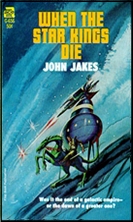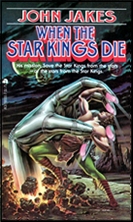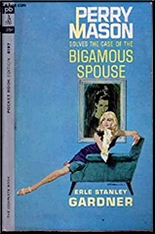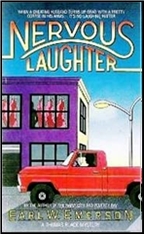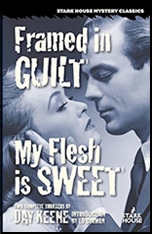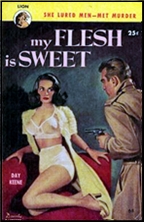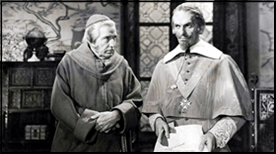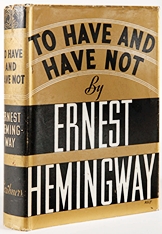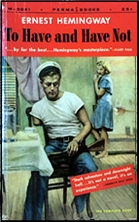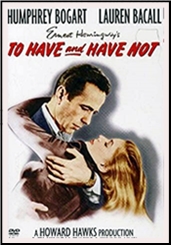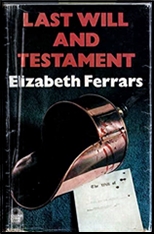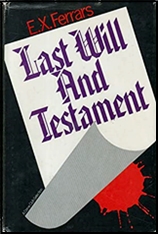REVIEWED BY DAVID VINEYARD:
ARCHIE ROY – Devil in the Darkness. John Long, UK, hardcover, 1978. Valancourt Books, US, trade paperback, 2016.
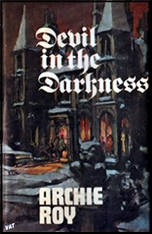
It’s cold and rather gloomy outside, and I find myself in the mood for an old fashioned haunted house thriller.
Sooner or later this house’s days will be ended and it will be demolished. For no house stands for ever. And when this happens, what I have done will be discovered…There are a number of possibilities that may, if any of them occurs, cause the house’s secret to be revealed long before its life is over.
However it happens I want no one else to be blamed for what I have done.
Ardvreck House stands alone in Scotland, a house deserted as much by its bad reputation as by its lonely location. Paul and Carol Wilson are newlyweds caught in a sudden April snowstorm driving across the Ardnamurchan Peninsula toward the cottage they have rented for their honeymoon when the storm forces them off the road.
Luckily for them there is a house nearby.
Well, some would call it luck.
Inside Ardvreck House they are greeted by nine disparate people who don’t immediately explain what it is they are doing in this dreary house without electric power. They welcome Paul and Carol though and provide them with a room to ride out the storm, but that night Paul is suddenly awakened.
And then he heard the noise. It came from the ceiling. The sound of footsteps. A heavy, measured tread back and forth, from the area of the bay window to the centre of the room. Back and forth. The sound of a heavy man’s regular pacing… The room above? Was there another floor to the house?
…Half-formulated speculations he had not dared to voice to Carol surfaced in his mind again. That this group of people had no permission to be in this dilapidated house at all – that they had some illegal purpose – that the army-type men were bogus – that he and Carol were in some kind of deadly danger. Before, those thoughts had seemed melodramatic; now in the low-confidence hours of the night he was not so quick to dismiss them.
Paul can rest assured the individuals in Ardvreck House have permission to be there, but there is nothing reassuring about their legal reason for being there. The “army types†are demolitions experts who have been hired to bring down Ardvreck House, destroy it, and the others are paranormal investigators.
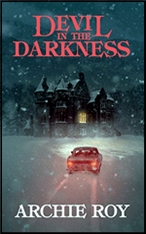
Ardvreck House is one of the most notorious haunted houses in the United Kingdom and has been for almost a century. People have died in Ardvreck House.
Archie Roy must seem an unlikely candidate to be writing supernatural thrillers. To begin he is that Archie Roy, Professor Archie Roy of the University of Glasgow, the astronomer who calculated the orbital trajectory of objects in space for NASA in the Sixties including the 1969 moon landing. He was a Fellow of the Royal Society of Edinburgh and the Royal Society of Astronomers as well as the British Interplanetary Society with an asteroid named after him in 1986.
He was also the author of three previous scientific thrillers in the Buchan vein.
But those weren’t his qualifications here. Far more important here is the fact he was his membership in both the London and Scottish Societies for Phychical Research and as author of A Sense of Something Strange, Archives of the Mind and Eaters of the Dead, and his reputation as the “Glasgow Ghostbuster†(unlike other psychical investigators with scientific reputations Roy did not abandon the Scientific Method when looking into the uncanny, the paranormal was always his last resort) he was more than qualified to take on the paranormal.
And that rigorous mind is part of what he brings to Devil in the Darkness as his team of innocents, psychical researchers, and hard headed demolition experts confront the horrors of Ardvreck House while the blizzard outside traps them and the madness inside the walls of the house tries to stop its secrets from being uncovered. Unlike most horror novels that rely on their chills from the credulity and often stupid behavior of their characters Roy seeks every rational explanation before turning to the paranormal and his characters behave as logically as policemen in their investigation.
The result is the real chills are greater and more disturbing than the artificial kind when some lady in a filmy negligee and high heels armed only with a candle goes exploring in the basement after midnight because she heard strange noises.
The stakes are higher here, the threat more real.
… From the direction of the kitchen a slithering sound had come. Their eyes staring at the closed double doors, the four listened intently. Behind the doors the slithering was repeated, softly and surreptitiously. And a heavy metallic, hollow thud was heard, familiar to Paul, agonizingly so because he could not place it. A scraping sound followed.
It seemed to Paul as if his spinal fluid had been replaced by ice-water. A wave of fear passed over him like a chill breeze from the roofless hall. Was it his imagination or did one of the doors actually ease towards them a little as if under a cautious, testing pressure from the other side?
There were more noises; a trundling sound which lasted all of four seconds was succeeded by a fresh bout of scraping and scratching. Somehow he managed to take the first step towards the kitchen doors.
‘What are you going to do?’ Joyce hissed.
‘Open them.’
‘No!’ Carol was on her feet by now.
‘They may only be noises.’
‘No. Don’t open the doors.’
“Don’t open the doors,†good advice in any supernatural thriller, and hope they don’t open themselves. While Devil in the Darkness isn’t in a class with Shirley Jackson’s The Haunting of Hill House, it could sit comfortably on the shelf with it, Richard Matheson’s Hell House, Russell Kirk’s The Old Dark House of Fear, Dorothy MacCardle’s The Univited, Stephen King’s The Shining, and J. B. Priestley’s Benighted (filmed as The Old Dark House), and that’s as fine a collection of damned and doomed architecture as you can hope to find.
Something to savor on a cold stormy night beneath a warm throw with a medicinal cat in your lap and a good dog at your feet, and the beverage of your choice, fortified or not, at your hand.
And whatever you do when the cat suddenly arches her spine and hackles rise on the dog as he growls menacingly, don’t open the door…
